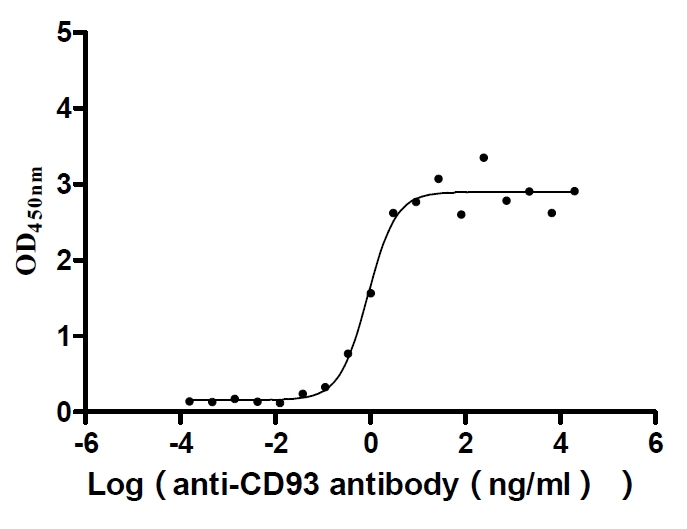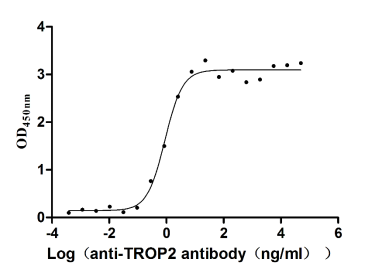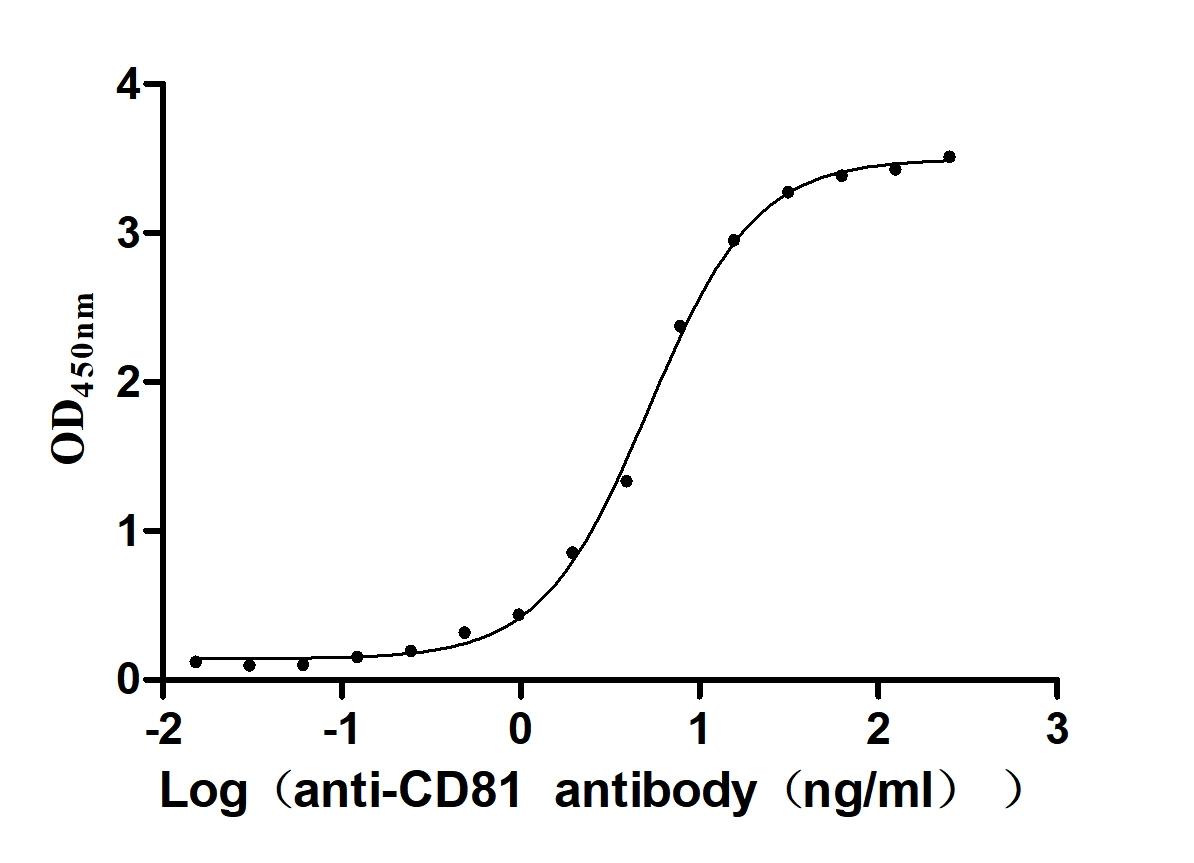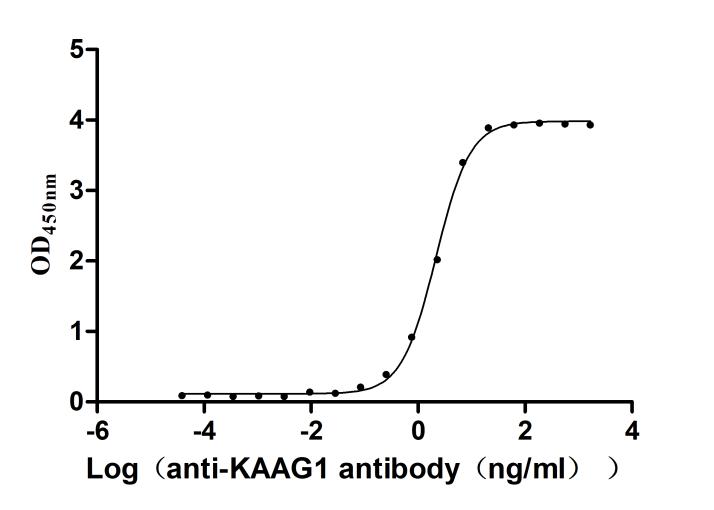Recombinant Arabidopsis thaliana E3 ubiquitin-protein ligase CHIP (CHIP)
-
中文名稱:Recombinant Arabidopsis thaliana E3 ubiquitin-protein ligase CHIP(CHIP)
-
貨號:CSB-YP882936DOA
-
規(guī)格:
-
來源:Yeast
-
其他:
-
中文名稱:Recombinant Arabidopsis thaliana E3 ubiquitin-protein ligase CHIP(CHIP)
-
貨號:CSB-EP882936DOA
-
規(guī)格:
-
來源:E.coli
-
其他:
-
中文名稱:Recombinant Arabidopsis thaliana E3 ubiquitin-protein ligase CHIP(CHIP)
-
貨號:CSB-EP882936DOA-B
-
規(guī)格:
-
來源:E.coli
-
共軛:Avi-tag Biotinylated
E. coli biotin ligase (BirA) is highly specific in covalently attaching biotin to the 15 amino acid AviTag peptide. This recombinant protein was biotinylated in vivo by AviTag-BirA technology, which method is BriA catalyzes amide linkage between the biotin and the specific lysine of the AviTag.
-
其他:
-
中文名稱:Recombinant Arabidopsis thaliana E3 ubiquitin-protein ligase CHIP(CHIP)
-
貨號:CSB-BP882936DOA
-
規(guī)格:
-
來源:Baculovirus
-
其他:
-
中文名稱:Recombinant Arabidopsis thaliana E3 ubiquitin-protein ligase CHIP(CHIP)
-
貨號:CSB-MP882936DOA
-
規(guī)格:
-
來源:Mammalian cell
-
其他:
產(chǎn)品詳情
-
純度:>85% (SDS-PAGE)
-
基因名:CHIP
-
Uniprot No.:
-
別名:CHIP; PUB61; At3g07370; F21O3.8E3 ubiquitin-protein ligase CHIP; EC 2.3.2.27; Carboxyl terminus of HSC70-interacting protein; AtCHIP; Plant U-box protein 61; RING-type E3 ubiquitin transferase CHIP; U-box domain-containing protein 61
-
種屬:Arabidopsis thaliana (Mouse-ear cress)
-
蛋白長度:full length protein
-
表達(dá)區(qū)域:1-278
-
氨基酸序列MVTGVASAMA ERLKEDGNNC FKKERFGAAI DAYTEAIALS PNVPAYWTNR ALCHMKRKDW TKVEEDCRKA IQLVHNSVKA HYMLGLALLQ KKEFTNGVKE LQRALDLGRC SNPTGYMVEE IWEELSKAKY MEWELVSAMR SWELNSLKET CEAALNQQRA LDMSRTEESS DEAYTAHTER LKALERVFKK AAEEDKPTEV PDYLCCNITL EIFRDPVISP SGVTYERAAI LEHLKKVGKF DPITREKIDP ANLVPNLAIK EAVAAYLEKH VWAYKMGC
-
蛋白標(biāo)簽:Tag?type?will?be?determined?during?the?manufacturing?process.
The tag type will be determined during production process. If you have specified tag type, please tell us and we will develop the specified tag preferentially. -
產(chǎn)品提供形式:Lyophilized powder
Note: We will preferentially ship the format that we have in stock, however, if you have any special requirement for the format, please remark your requirement when placing the order, we will prepare according to your demand. -
復(fù)溶:We recommend that this vial be briefly centrifuged prior to opening to bring the contents to the bottom. Please reconstitute protein in deionized sterile water to a concentration of 0.1-1.0 mg/mL.We recommend to add 5-50% of glycerol (final concentration) and aliquot for long-term storage at -20℃/-80℃. Our default final concentration of glycerol is 50%. Customers could use it as reference.
-
儲存條件:Store at -20°C/-80°C upon receipt, aliquoting is necessary for mutiple use. Avoid repeated freeze-thaw cycles.
-
保質(zhì)期:The shelf life is related to many factors, storage state, buffer ingredients, storage temperature and the stability of the protein itself.
Generally, the shelf life of liquid form is 6 months at -20°C/-80°C. The shelf life of lyophilized form is 12 months at -20°C/-80°C. -
貨期:Delivery time may differ from different purchasing way or location, please kindly consult your local distributors for specific delivery time.Note: All of our proteins are default shipped with normal blue ice packs, if you request to ship with dry ice, please communicate with us in advance and extra fees will be charged.
-
注意事項(xiàng):Repeated freezing and thawing is not recommended. Store working aliquots at 4°C for up to one week.
-
Datasheet :Please contact us to get it.
靶點(diǎn)詳情
-
功能:Has E3 ubiquitin-protein ligase activity and may target misfolded substrates towards proteasomal degradation. Regulates the activity of some serine/threonine-protein phosphatases by E3 ubiquitin-protein ligase activity. Required for responses to biotic and abiotic stresses such as auxin, abscisic acid (ABA), low and high temperature and darkness, probably through the activation of serine/threonine-protein phosphatase and the subsequent modification of the plasma membrane composition. Regulates the chloroplastic Clp proteolytic activity in response to stresses. Ubiquitylates FtsH1, a component of the chloroplast FtsH protease, and affects protein degradation in chloroplasts. Mediates plastid precursor degradation to prevent cytosolic precursor accumulation, together with the molecular chaperone HSC70-4. Mediates ubiquitination of transit peptides and thereby led to their degradation through the ubiquitin-proteasome system.
-
基因功能參考文獻(xiàn):
- Through selective degradation of Clp subunits, AtCHIP could positively regulate homeostasis of Clp proteolytic subunits and maximize the production of functional chloroplasts. Similar results were obtained from transgenic tobacco plants. PMID: 26085677
- we propose that CHIP and NBR1 mediate two distinct but complementary anti-proteotoxic pathways and protein's propensity to aggregate under stress conditions is one of the critical factors for pathway selection of protein degradation PMID: 24497840
- Hsc70-4 and CHIP were highly induced in ppi2 mutant plants, where they mediated the degradation of chloroplast-targeted precursors through the ubiquitin-26S proteasome system. PMID: 20028838
- AtCHIP, an E3 ubiquitin liagase, functions upstream of protein phosphatase 2A in stress-responsive signal transduction pathways under conditions of low temperature or in the dark. [AtCHIP] PMID: 16640601
- The interaction of CHIP with FtsH1 in vitro, in normal and in CHIP-over-expressing plants is reported. PMID: 17714429
顯示更多
收起更多
-
數(shù)據(jù)庫鏈接:
Most popular with customers
-
Recombinant Rat Intestinal-type alkaline phosphatase 1 (Alpi) (Active)
Express system: Mammalian cell
Species: Rattus norvegicus (Rat)
-
Recombinant Human Complement component C1q receptor (CD93), partial (Active)
Express system: Mammalian cell
Species: Homo sapiens (Human)
-
Recombinant Human Tumor-associated calcium signal transducer 2 (TACSTD2), partial (Active)
Express system: Mammalian cell
Species: Homo sapiens (Human)
-
Recombinant Human CD81 antigen (CD81), partial (Active)
Express system: Mammalian cell
Species: Homo sapiens (Human)
-
Recombinant Human Killer cell immunoglobulin-like receptor 3DL2 (KIR3DL2), partial (Active)
Express system: Mammalian cell
Species: Homo sapiens (Human)
-
Recombinant Human Kidney-associated antigen 1 (KAAG1) (Active)
Express system: E.coli
Species: Homo sapiens (Human)

















